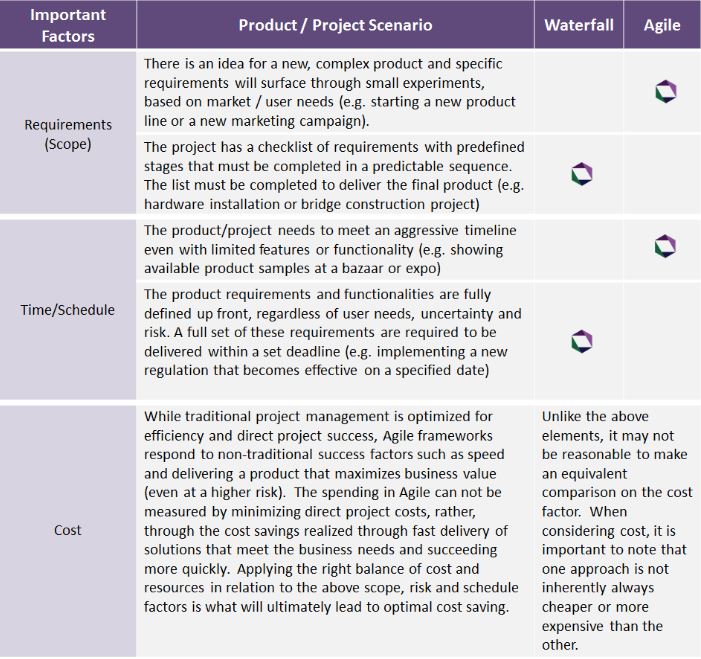Our constant pursuit for efficiency and effectiveness has presented us with two popular approaches:
one gives us a rooted structure and discipline and the other probes us to change the way we think. It is within these fundamental concepts that most of us find ourselves in a conundrum when trying to decide between these approaches.  In the first blog in this series, ”Agile” vs. “Waterfall”: It’s Not a Competition, we discussed how both Agile and traditional project management share a similar cause – efficiency and value delivery – and how neither approach has proven to be inherently better than the other nor presents a
In the first blog in this series, ”Agile” vs. “Waterfall”: It’s Not a Competition, we discussed how both Agile and traditional project management share a similar cause – efficiency and value delivery – and how neither approach has proven to be inherently better than the other nor presents a
comprehensive solution on its own. In this segment, we will explore strategies and factors to consider when selecting a fitting approach.
Organizations commonly adopt new delivery approaches, such as Agile, that have proven to reach markets faster, realize quicker returns, and minimize costs. Yet, depending on the scenario, there are times when plan-driven, traditional frameworks provide a higher likelihood for projects’ success. So, what drives the decision to go with one or the other? What should be considered when selecting the approach that best meets the needs of the organization?
The Nature of a Project or Product
A good starting place is to examine the three important aspects of a project: Scope, schedule and cost. In order to determine the best approach, consider these factors against the specifics of the project / product in question. Below are sample real-life project scenarios that could be considered during this process.

The Project or Product Environment
Another vital element that can inform or influence approach selection is the project or product delivery environment and lifecycle. Factors to consider here include:

Overall, our experience and supporting data suggest that not all Agile projects succeed and not all “waterfall” projects fail. Organizations can identify the most fitting approach that helps accelerate delivery, minimize risk, improve return on invest, and ultimately present a higher likelihood of success by carefully analyzing the nature of a product or project and having a good strategy that creates the enabling environment.
Further, if the decision is to transition to an Agile approach, similar to any new process or change initiative, Agile adoption requires a supportive environment that spans beyond a given project. An Agile implementation must be supported by change management activities that foster buy-in and ensure the Agile vision and goals are clearly communicated across the enterprise. Our next piece in this series, “Agile vs. Waterfall Project Management Series: #3 Can They Get Along?,” further explores proven methods that help organizations determine how to leverage both approaches during this critical transformation.
In the meantime, below is a simple two-step tip you can leverage right away during your transition:
-
Identify a Common Vision: Define the desired future state. Many large or long-tenured organizations have a good deal of organizational debt. Start by looking into potentially outdated approaches and procedures, and define a clear, achievable target state that is unique to your organization.
-
Prioritize Your Transformation Backlog: Set clear priorities to help your team feel less overwhelmed with the amount of change required to adopt a new approach. This is also as one of the most crucial steps to investing resources wisely.
Contact us to learn more.
